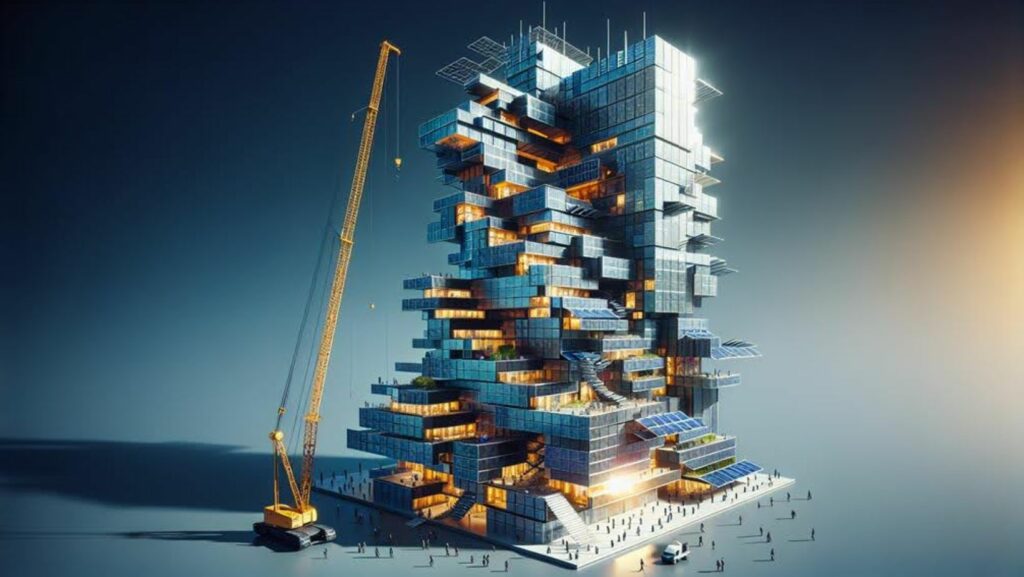Imagine a metal structure that adapts to its environment like a chameleon, seamlessly blending in or standing out as needed. This level of flexibility and efficiency is becoming increasingly achievable in the metal construction industry through cutting-edge innovations.
From sustainable materials that reduce environmental impact to advanced fabrication technologies streamlining production processes, the industry is undergoing a significant transformation.
Stay tuned to discover how these developments are reshaping the landscape of metal construction, paving the way for a more sustainable and dynamic future.
Sustainable Metal Materials
When considering sustainable metal materials for construction projects, prioritize those that have a proven track record of being recycled and reused efficiently. Opting for recyclable metals not only reduces the demand for virgin resources but also minimizes environmental impact. Additionally, incorporating energy-efficient coatings can further enhance the sustainability of metal structures by reducing energy consumption during the building’s lifecycle.
Recyclable metals, such as steel and aluminum, are ideal choices for sustainable construction. These materials can be repurposed multiple times without losing their properties, making them valuable assets in the circular economy. By selecting recyclable metal, you contribute to a more eco-friendly construction industry.
Energy-efficient coatings play a crucial role in enhancing the sustainability of metal structures. These coatings help improve the overall energy performance of buildings by reducing heat transfer and enhancing insulation. By integrating energy-efficient coatings into your construction projects, you can significantly lower energy costs and minimize environmental impact.
Choosing recyclable metal and implementing energy-efficient coatings are essential steps toward creating more sustainable and environmentally conscious construction practices.
Advanced Fabrication Technologies
To optimize the sustainability and efficiency of metal construction projects, exploring advanced fabrication technologies is crucial for enhancing structural integrity and design flexibility.
Innovations such as 3D printing and laser cutting are revolutionizing the way metal components are created and assembled. 3D printing allows for the production of intricate metal parts with high precision, reducing material waste and lead times. This technology enables architects and engineers to push the boundaries of design, creating unique and complex structures that were once challenging to fabricate using traditional methods.
On the other hand, laser cutting provides a fast and accurate way to cut metal sheets into custom shapes and sizes, streamlining the manufacturing process and ensuring tight tolerances.
Prefabrication and Modular Construction
Prefabrication and modular construction methods have revolutionized the metal construction industry, offering enhanced efficiency and streamlined project timelines. Efficient assembly processes in prefabrication allow for components to be manufactured off-site in controlled environments, reducing construction time on-site significantly. The ability to simultaneously work on-site and fabricate components off-site results in overlapping project phases, ultimately accelerating project completion.

Cost-effective solutions are another significant advantage of prefabrication and modular construction. By fabricating standardized components in a factory setting, companies can benefit from economies of scale, reducing material waste and labor costs. Moreover, the controlled environment of a factory helps ensure quality control, leading to fewer errors and rework, further saving both time and money.
The integration of prefabrication and modular construction into metal projects not only enhances efficiency and accelerates timelines but also provides cost-effective solutions that benefit both contractors and clients. Embracing these innovative methods can lead to more sustainable and profitable outcomes in the metal construction industry.
Digital Design Tools and Automation
The utilization of advanced digital design tools and automation in metal construction projects has fundamentally transformed the industry’s approach to planning and execution. AI-driven modeling software has revolutionized the design phase, allowing for intricate and precise metal structures to be created with unparalleled efficiency. These tools analyze vast amounts of data to optimize designs for strength, cost-effectiveness, and sustainability, ultimately leading to enhanced project outcomes.
Moreover, robotic welding technology has significantly improved the fabrication process in metal construction. Robots equipped with advanced welding capabilities can work faster and with higher precision than human welders, ensuring consistent quality and reducing the risk of errors. This automation not only accelerates production but also enhances safety by minimizing the exposure of workers to hazardous conditions.
Incorporating digital design tools and automation into metal construction projects not only streamlines processes but also opens up new possibilities for innovation and creativity in architectural design. By embracing these technologies, the industry is paving the way for a more efficient, sustainable, and sophisticated future in metal construction.
Integration of Smart Building Systems
The evolution towards integrating smart building systems in metal construction projects signals a pivotal shift towards enhanced operational efficiency and sustainability in the industry. Smart technology integration is revolutionizing how buildings are designed, constructed, and managed. By incorporating sensors, data analytics, and automation, metal structures can now optimize energy usage, monitor structural health in real time, and enhance occupant comfort. These advancements not only improve building system efficiency but also contribute to cost savings and environmental conservation.

Smart building systems enable proactive maintenance by predicting potential issues before they escalate, reducing downtime and repair costs. The integration of these technologies allows for remote monitoring and control, offering greater flexibility and convenience in managing metal constructions. Additionally, by harnessing data insights, stakeholders can make informed decisions to enhance building performance and longevity.
Conclusion
As you reflect on the trends in metal construction, one question arises: Are you ready to embrace the future of building with sustainable materials, advanced fabrication technologies, and smart building systems?
With innovations driving efficiency and sustainability, the industry is evolving rapidly. Stay ahead of the game by incorporating these trends into your projects and revolutionizing the way we construct buildings for a more sustainable future.

